SCHRACK Emergency luminaires

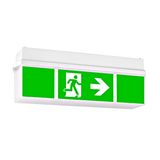



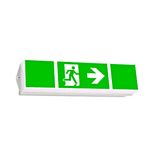


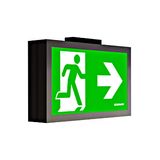
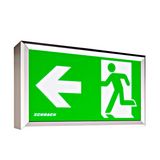



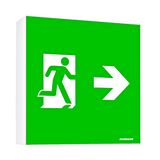
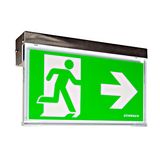

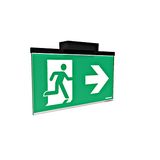



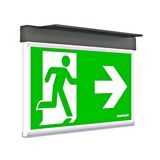



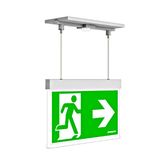
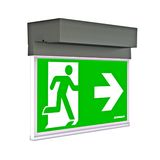


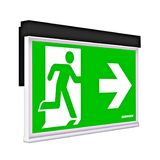
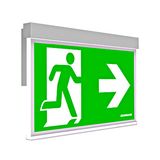

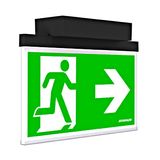
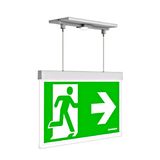




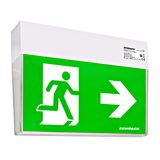
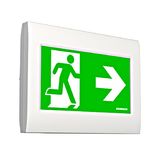

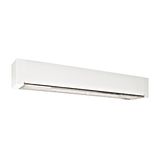

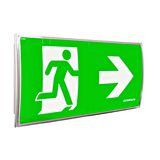




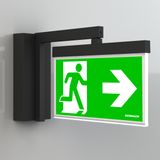

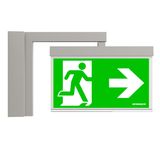
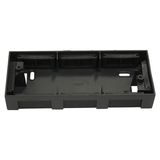
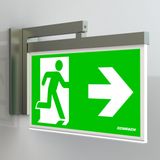
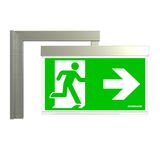

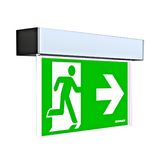
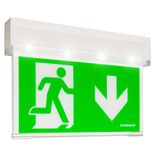
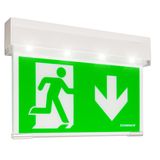
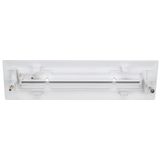
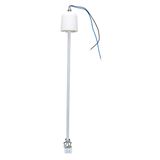
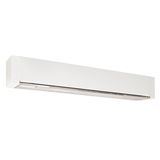
Schrack Emergency Luminaires for code-compliant egress
Project teams use this range to keep escape routes lit during mains loss and local faults. Families include bulkheads, downlights, twin-spots, and recessed blade signs with matching legends. Electricals: 220–240 V AC, PF ≥ 0.9 on maintained drivers; auto-test electronics exercise function/duration and flag faults via LED or bus. Typical autonomy 1 h or 3 h; ingress IP40 corridors to IP65/IP66 plant areas; impact up to IK08–IK10 on vandal-resistant bodies. Safety and performance align with EN 60598-2-22 (emergency luminaires), EN 1838 (illuminance and signage), IEC 61347 (control gear), and IEC 62034 (automatic test).
Schrack Exit Lighting signage and viewing distances
Blade and box signs come with ISO 7010 legends, double-sided options, and field-swap arrow plates. Standard viewing classes 24 m and 30 m keep wayfinding predictable across floors. Luminance uniformity and contrast ratios meet EN 1838 tables, so pictograms remain readable in smoky conditions. Surface, semi-recessed, and ceiling-suspended kits share hole patterns for quick swap-outs; through-wiring kits (3/5/7-core) carry mains, test, and control conductors along the line.
Power topologies and diagnostics with Schrack battery lighting units
Self-contained versions ship with NiMH or LiFePO₄ packs; temperature-rated cells maintain capacity in warm ceiling voids. Central-battery variants (24/48/110 V DC, project-dependent) remove batteries from the ceiling and simplify fleet maintenance. Interface choices: standalone auto-test (local status LED), DALI-2 emergency (group test, logs, faults to BMS), and monitored relay I/O for legacy sites. Charger algorithms include CC/CV with pack ID to prevent mismatches; low-voltage cut-off protects chemistry during deep discharges.
Applications with Schrack Safety Luminaires in mixed environments
- Routes and intersections: recessed downlights with wide optics for 1 lx minimum along the centre line; higher levels at changes of direction.
- High-risk task areas: twin-spots aimed at machinery for ≥10 lx where hazards persist during evacuation.
- Outdoor egress and plant rooms: IP65 bulkheads with clear/opal lenses; anti-condensation breathers and IK10 shields where abuse is likely.
- Stair cores and lobbies: slim blades avoid visual clutter while keeping the 2 m mounting height band unobstructed.
In specifications, the general emergency layer is often called schrack emergency lighting to align drawings, legends, and test plans.
Circuit topology, testing, and commissioning practice (Schrack method)
Use dedicated final circuits for maintained lines where local switching could defeat egress lighting. Label test inputs and DALI addresses on the inside door card; schedule automatic function (weekly/monthly) and duration (annual) tests per IEC 62034. Document battery change intervals by chemistry. Coordinate SPD levels (board vs luminaire) so driver chargers survive switching transients. Heat-run early: ceiling plenum temperatures regularly exceed 40 °C and will shorten autonomy if unaccounted.
Controls, monitoring, and BMS integration in the Schrack ecosystem
DALI-2 emergency drivers expose status, autonomy, and fault codes; room controllers forward events to the BMS. Central-battery systems publish string voltage, charger current, and block health; maintenance teams can predict pack replacements instead of waiting for failures. For mixed platforms, dry-contact concentrators mirror “fault/OK” to SCADA without re-addressing the floor.
Schrack selection criteria for B2B engineers
- Mode: maintained for wayfinding + ambience, non-maintained for pure egress, central battery where access is limited.
- Autonomy: 1 h for quick evacuation; 3 h where firefighting lift or extended clear times are mandated.
- Environment: IP/IK vs location; UV-stable housings outdoors; anti-corrosion screws in coastal sites.
- Optics: corridor wide for routes; medium beams for mounting heights >3 m; twin-spot for high-risk tasks.
- Diagnostics: DALI-2 emergency where fleet logs matter; standalone auto-test for small blocks.
- Service model: front-release trays, plug-in packs, and common legends to cut MTTR.
For generator-backed sites, specify schrack backup lighting on essential circuits so autonomy can be right-sized rather than oversized.
Procurement and kitting for rollouts with Schrack part codes
Build per-space kits: body (optic, lumen pack, autonomy), legend/arrow set, mounting kit, control interface (standalone/DALI-2/CB), and any IP/IK accessories. Add test keys, address labels, spare packs (per chemistry), and torque cards. Keep one carton of common legends and diffusers for night-shift repairs. Use the schedule to mark which lines require pictogram changes per floor—stores won’t guess.
Integration with distribution boards and panels (Schrack control gear)
Feed emergency finals from RCBOs sized to luminaire inrush; segregate normal vs emergency neutrals to avoid ghost faults. In central-battery rooms, land chargers on monitored feeders; include heat and ventilation notes in the one-line. Panel meters log charger kWh to your energy dashboard. Where doors open into guarded areas, wire test inputs through safety relays to prevent unintended blackouts during function tests.
Performance notes installers actually check
Maintain 1 lx average on escape routes and 0.5 lx in open areas; check minimum-point ratios at doorways and turns. Keep mounting heights consistent; avoid shadows under bulkheads over doors. Validate duration with warm luminaires—the first test after charge acceptance often over-predicts. And never bury the status LED behind decorative trims.
Advantages of working with Bankoflamps
You get engineered kits matched to your drawings, project pricing tied to room schedules, and live EU stock before you book ceiling crews. Quotes return fast—around an hour in typical cases. Ordering by EAN/MPN prevents variant drift; the portal shows lead times, shipment status, and downloadable price lists. Approved clients can use post-payment up to 30 days. We consolidate partials to cut freight and hold price-validity windows so phased floors stay predictable. Your account manager cross-checks autonomy, optics, IP/IK, interface (standalone/DALI-2/CB), legends, and mounting kits—so cartons land site-ready.